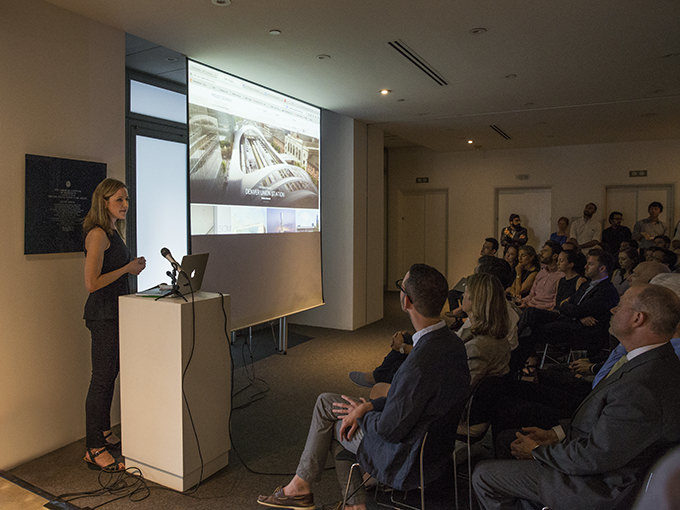
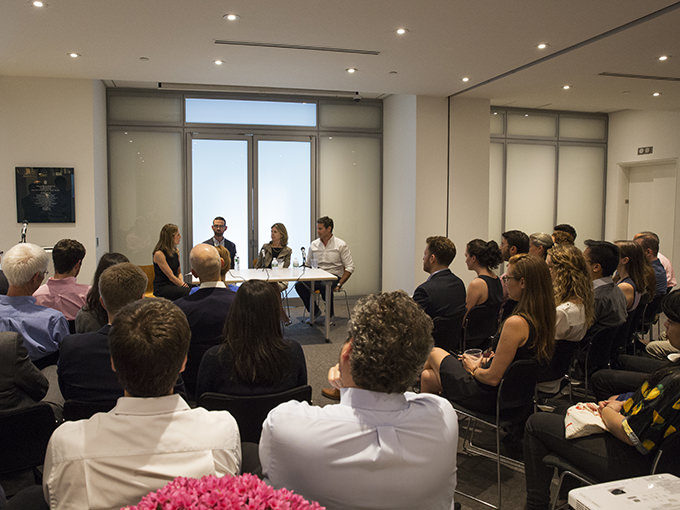
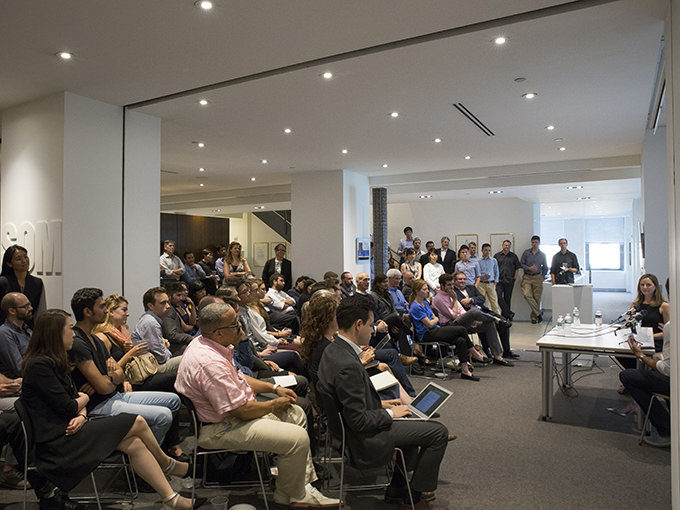
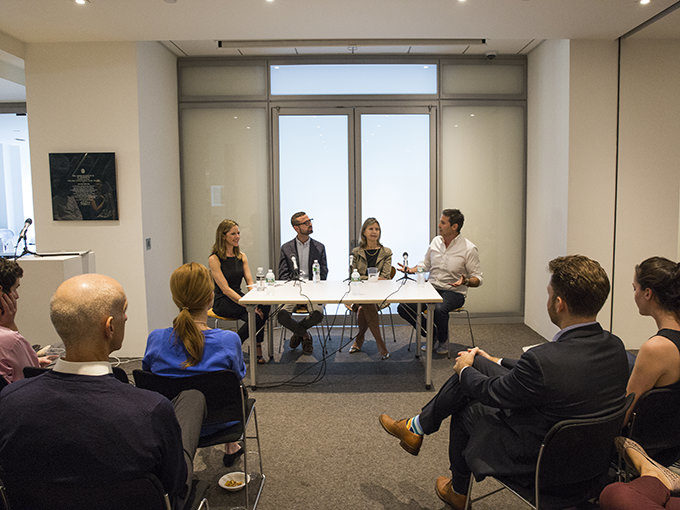
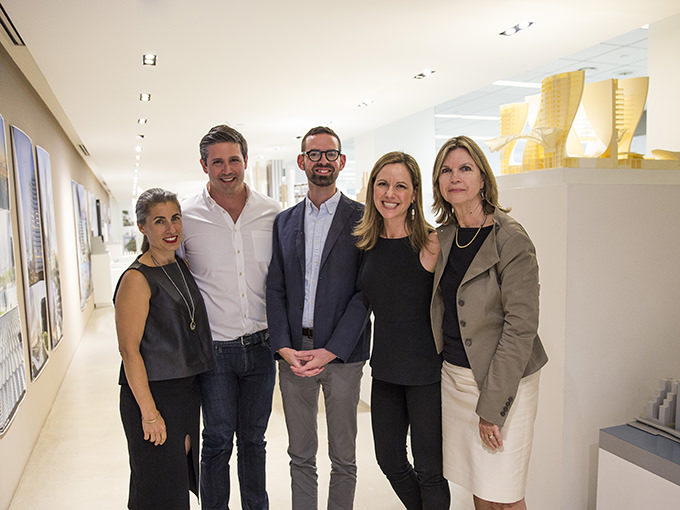
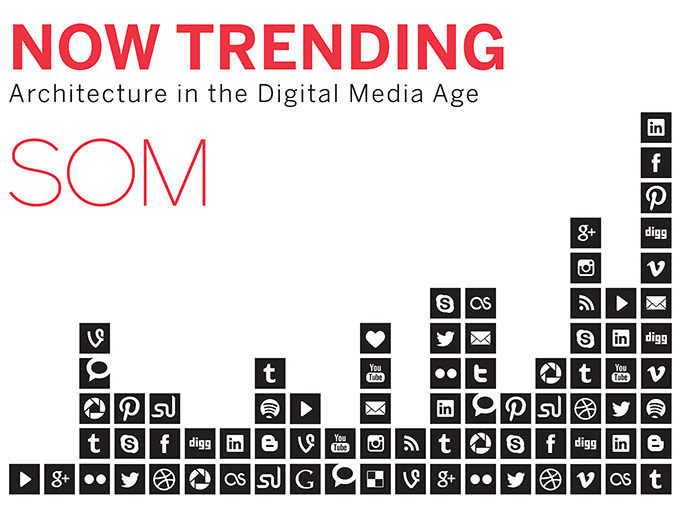
Today’s world is shaped by the Internet as much as the architecture that surrounds us. But how is the Internet shaping the discipline of architecture itself?
That question was explored on July 31 during the panel discussion, “Now Trending: Architecture in the Digital Media Age.” Employees and guests crowded SOM’s New York office to hear from three leading figures in the design press: Cathleen McGuigan, editor in chief of Architectural Record; Marc Kushner, founder and CEO of Architizer; and Alan Brake, executive editor at The Architect’s Newspaper. SOM organized the event in conjunction with the launch of its new website and social media strategy.
The panelists addressed a range of questions about the convergence of architecture and digital media. Overall, they agreed that digital media has impacted architecture in a positive way. It has “enlarged and enriched” the conversation, said McGuigan, noting that her magazine’s website draws far more visitors than print subscribers. “We have a lot of non-architect readers, but that’s not bad,” she said. “We think architecture should be popular.”
Kushner noted that digital media has “fundamentally changed the way we consume architecture.” Whether viewing images on a desktop computer or mobile phone, everyone can now be an architecture critic and share their opinions. Digital media, particularly social platforms, “ups the stakes for good, unique architecture,” he said.
Compared to other disciplines, the architecture profession has been slow to capitalize on digital media, said Brake. “The urbanism world embraced digital media a little bit faster,” he said, “and that has empowered a whole generation of new people who have no background in planning to stake a claim in the city and to engage in urban issues in a different kind of way.” Architecture is finally starting to catch up, he said.
But there are pitfalls, said McGuigan. Often, an online visitor seeks “quick hits of visual knowledge” rather than a thorough understanding. “I find it troubling that people think they know a building after seeing a thumbnail image of it,” she said. “You can’t really know a building without experiencing the space.”
Still, all the panelists underscored the importance of using digital media channels to boost exposure and spur dialogue. “Whether we’re journalists thinking about our future readers or we’re architects thinking about our future clients, we are all thinking about where the world is going,” said McGuigan. “This is a very, very important way to reach people.”
The panel discussion was organized by SOM’s Professional Development Committee and Firmwide Communications Group. Jenna M. McKnight, SOM Digital Editor, served as moderator. For more information, contact [email protected].